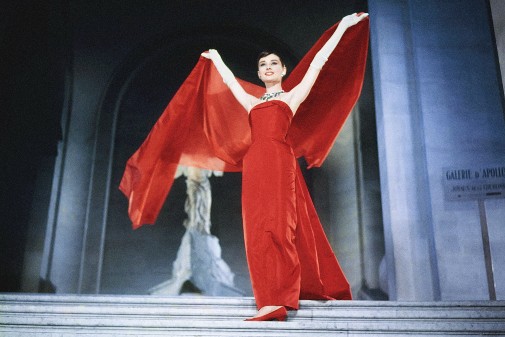
Throughout the histories of cinema and fashion, there has seldom existed a more glorious collaboration than that of Audrey Hepburn and Hubert de Givenchy. The English actress and the French couturier first worked together in the 1954 movie Sabrina, a costuming masterpiece whose iconic fashions and contentious crediting have been previously written about at The Film Experience by abstew. After his uncredited contribution to that Billy Wilder classic, Givenchy would go on to dress Hepburn on and off-screen many more times, though he always got the credit he deserved after the Sabrina kerfuffle.
That was wise of him since, in 1957, he received an Academy-Award nomination for what is one of Audrey Hepburn's most stylish screen adventures, the indelible Funny Face…
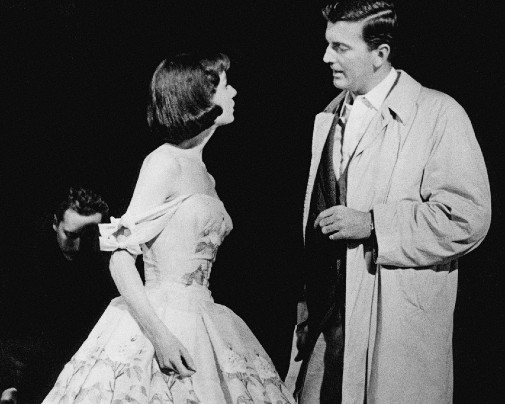
Before exploring the fashionable miracles that are the costumes of Funny Face, we should consider the totality of the Hepburn-Givenchy collaboration. Despite Oscar's recognition, it's important to understand that Hubert de Givenchy was mainly a fashion designer rather than a costumer. In the few films he did, the couturier would focus on a few showpieces while leaving other crew members to deal with the less spectacular clothes. Because of that, there can be a bit of dissonance when we watch a movie where Givenchy worked, especially when his designs are asked to do more than being gawked at in admiration.
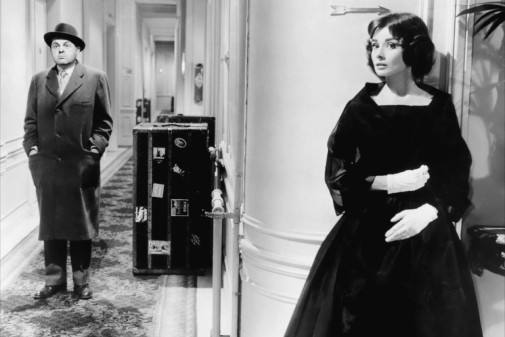
In 1957, Givenchy and Hepburn also did Love in the Afternoon, a Billy Wilder romantic comedy where the actress plays the willful daughter of a Parisian private investigator. Lost in romantic ideals, Hepburn's character surreptitiously weasels herself into one of her father's cases, pretending to be a worldly woman to save an American lothario. In the narrative, there's a necessary duality between the innocent girl and the seductress she pretends to be, but the costumes rarely reflect the narrative. Regardless of her character's behavior, Hepburn's style is a constant of effortless elegance and only her changing hairdo visualizes the dynamics of the script.
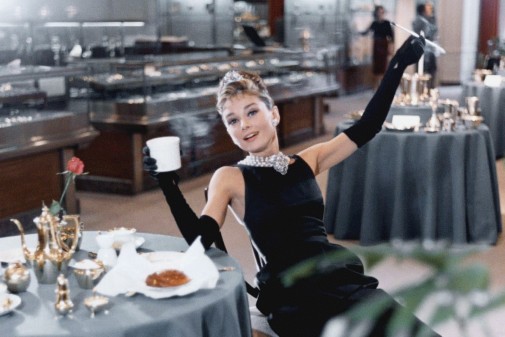
That sort of textual disconnect could be useful, of course. For example, the terminally elegant Holly Golightly from 1961's Breakfast at Tiffany's is a storm of contradictions. The introverted Hepburn found it difficult to play the extravagant Holly and the actress's screen persona was at odds with the particularities of her sex worker character. The costumes, instead of playing up the actress's demure presence or the role's salaciousness, only add to the enticing mystery of Holly, making her look like a model with a penchant for costume jewelry and attention-seeking designs. Part of what makes the character so iconic is how slippery her identity feels within the movie. Givenchy's costumes are a big part of that.
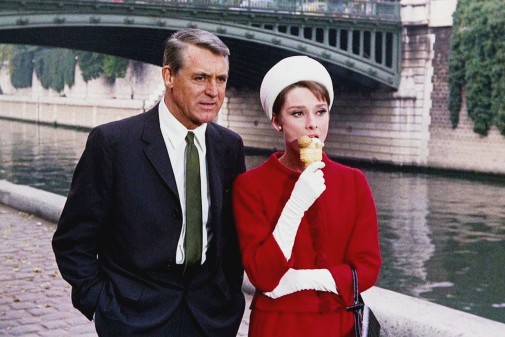
For 1963's Charade, Givenchy's impeccable creations add to the humor of Stanley Donen's Hitchcockian comedy-cum-thriller. Due to a twist in the story, Hepburn's character is left stranded in Paris with only a suitcase full of holiday clothes. However, she has a wealthy panoply of different outfits, that in no way reflect the snowy escapades suggested by the picture's first scene. The costumes are as dazzling as they are nonsensical, but that adds to the fun of the farce. There's a similar absurdity in 1966's How to Steal a Million. In it, Hepburn's sneaky character tries to conduct a criminal rendezvous with a supposed art burglar while wearing an extravagant lace dress with matching face-mask in a crowded restaurant. It's delightfully goofy.
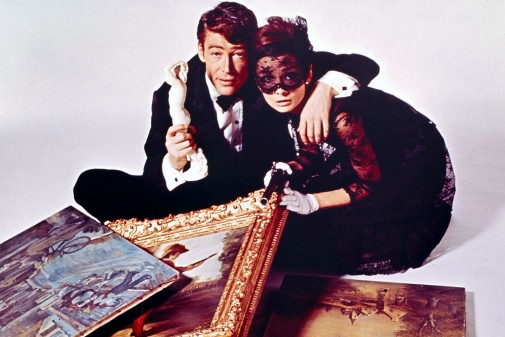
Even when the films they appear in are less than great, Givenchy's designs for Audrey Hepburn are beautiful distractions. See 1964's Paris When it Sizzles, one of the actress' worst films and one where the open-backed dress and smart suit designed by the French couturier are more worthy of the audience's attention than the inanity spewing from the actors' mouths. Even the über-referential Love Among Thieves, a minor TV movie from 1987 that features Hepburn's last leading role, is improved by Givenchy's creations. The red dress the actress wears on the steps of the MET for the picture's last scene is particularly breath-taking, in so small part because it echoes a similar moment in the best Hepburn-Givenchy showcase of them all, Funny Face.
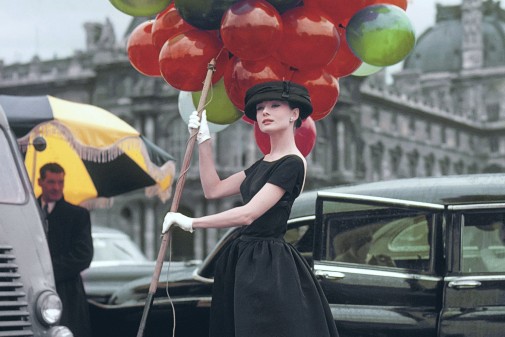
The reason I think Stanley Donen's Funny Face represents the best of what Audrey Hepburn and Hubert de Givenchy could do together onscreen is that the nature of the film is ideal for the limitations of both artists. Speaking specifically about Givenchy, a movie about the world of fashion, magazine photoshoots, and Parisian splendor is perfect for showcasing his designs. This is the story of a mousy intellectual bookseller that is unwittingly selected to be the model for a Paris-set editorial by a leading American fashion publication. Being a Hepburn vehicle, the film ends with her finding love in the arms of a much older man and going through an amazing makeover.
As a consequence of the plot, most of the clothes Audrey wears are unencumbered by complicated narrative significance since they are supposed to be pieces chosen for the photographs rather than an exteriorization of her character's inner life. They are meant to embody the magic of fashion and the spectacle of it, two things Givenchy's designs do with effortless grace.
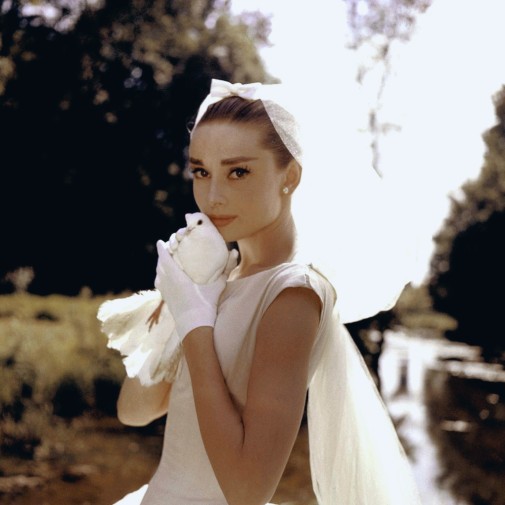
All of his ensembles for the film are beyond perfection, but the wedding dress that ends the photoshoot sequence is my personal favorite. The shape of the veil, the exuberance of the silhouette, the impeccable fit, all coalesce in a costume that is as simple as it is arresting, a synthetization of Hepburn's status as a fashion icon and her balletic elegance. I'd have given Givenchy (and Edith Head) the Oscar for that alone.
Funny Face is available to stream on Amazon Prime Video and Pluto TV. You can also rent it from Amazon, Google Play, Youtube, Apple iTunes, and others.